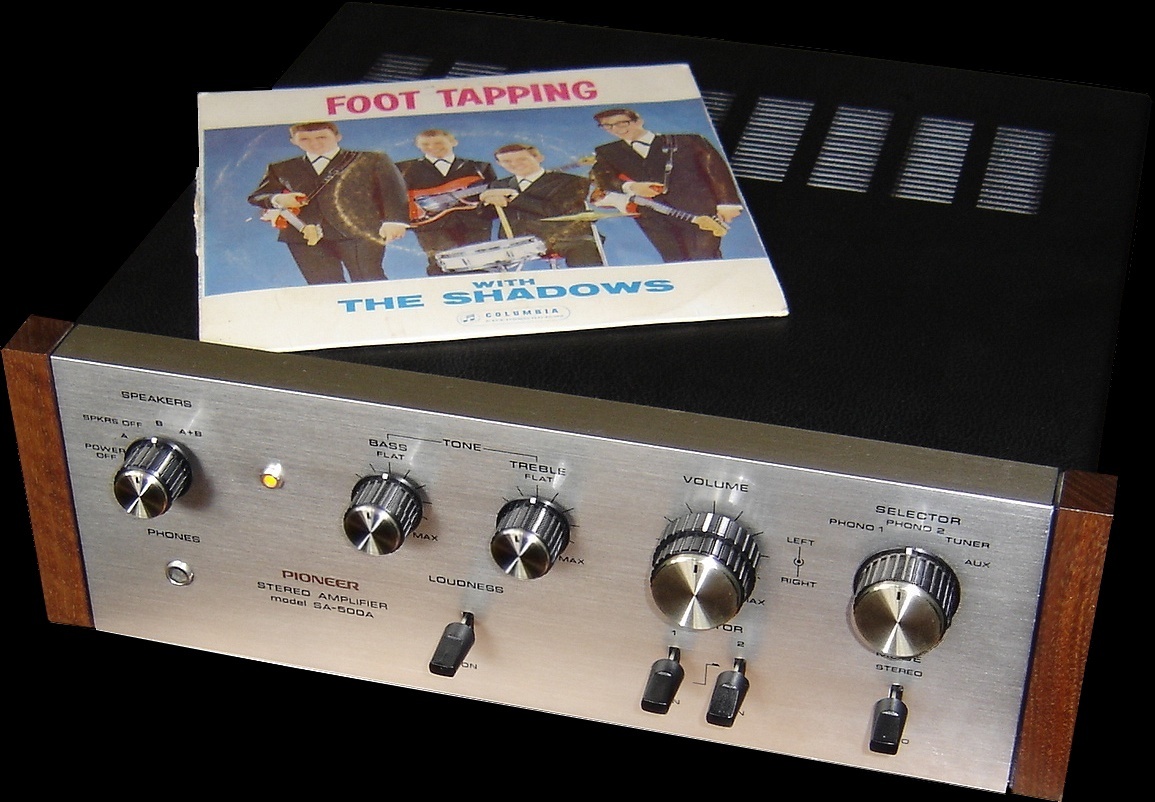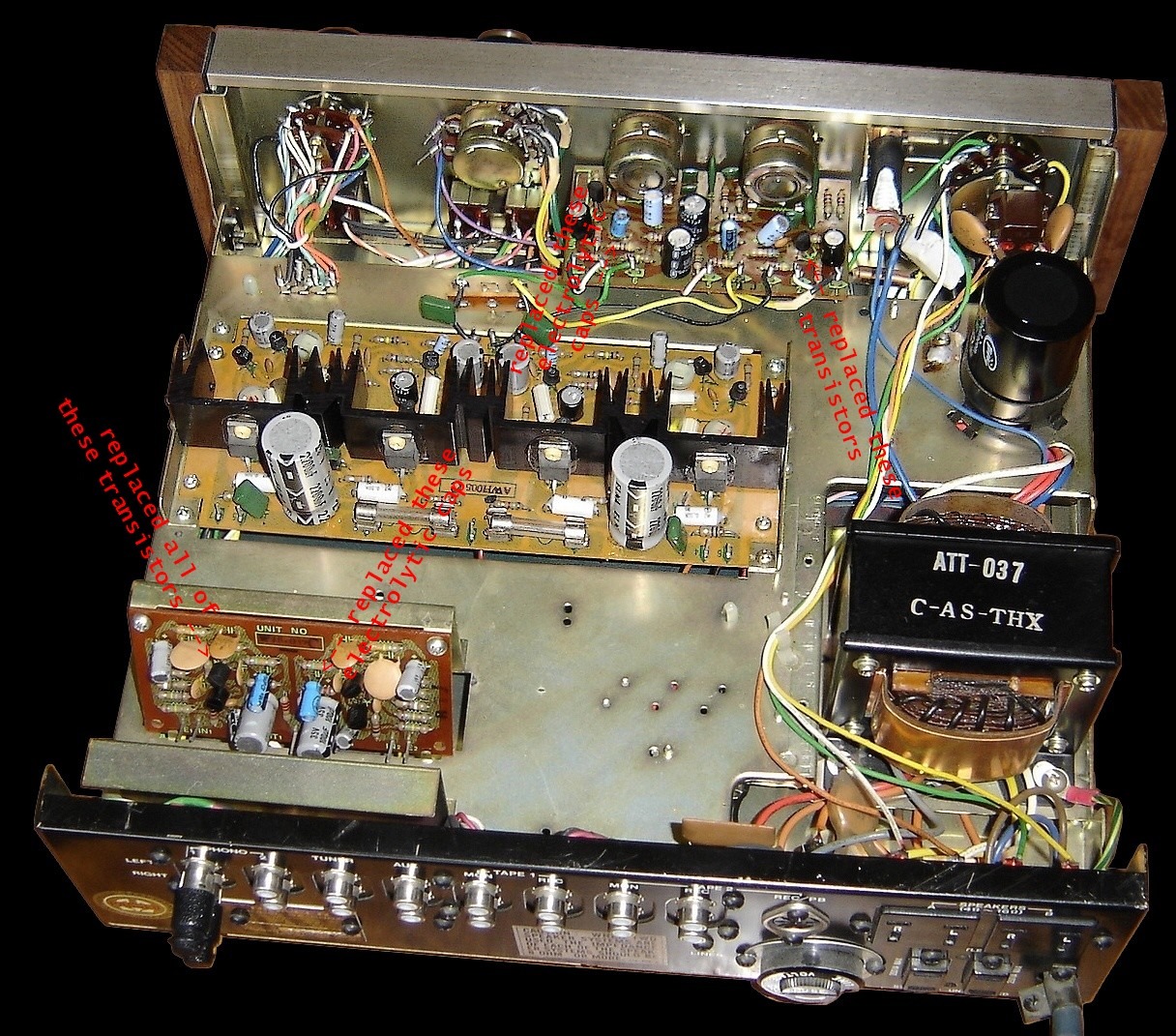There is something about the old stuff. It captures the imagination of a certain type of person I think. Built like bricks, and just as honest ... before the world got carried off on a digital dream cloud. It wasn't all good, but it stands up over time. Even diminutive amplifiers such as the Pioneer SA-500A at right sound better today than your average "affordable" DSP Surround receiver. They used simple circuits, simple construction and awesome plate steel gauges. All the potentiometers and switches in stereo gear in built back then were top quality because that was all there was. PCB mounted controls didn't exist. They come alive with just a squirt of WD-40, and work well for decades.
One of the selling points of this unit was that it used all silicon transistors, which shows up the vintage I guess. The circuitry is largely capacitor coupled which tends to give more of a vintage or slightly 'valve like' sound compared to modern DC coupled circuits which use large amounts of negative feedback.
Budget Hi Fi was better built in the '60s, '70s & '80s and predated the plethora of DSP (digital signal processing) that has largely taken the warmth out of the sound of modern domestic audio kit. e.g. digital tone controls may seem very convenient but sound horrible compared to analogue controls. DSP controls are pretty much incapable of musical transparency in my opinion. That's why 2nd hand NADs sell for such good prices. Don't get me wrong, I am not anti-digital, I am anti-medioctrity. In an age of throwaway being able to service this stuff and get it up to scratch is handy. Not only was it built to last but for the most part it sounded better than average stuff does now because people listened! There isn't much good budget Hi Fi around anymore. Melbourne once celebrated a plethora of little Hi Fi shops. People who appreciate good quality musical sounding equipment have become rather an arcane lot it seems; hence the interest.

I fixed three faults in this one in so many hours. It had a case of what I call 'TTS' ('Tired transistor Syndrome') - a common fault with old analogue. The small signal transistors measure fine with a meter, but in situ don't do their job because they have lost their effective current gain, or 'hfe' which throws all the operating voltages out and stops the circuit from doing it's job. In this case it was the right hand phono preamp board (lower left). Also an electrolytic capacitor on the phono board was shorted causing DC to enter the volume pot making horrible scraping noises. The other common fault is that aged transistors sometimes go noisy in operation. This I suspect could be due to original manufacturing imperfections. This time it was in the tone control board up front. In this amp, it was the same type transistor that gave trouble.
Having found the parts in need of replacement, I replaced the same parts in the other channel with identical components in order to maintain tonal integrity between left and right channels. To be on the safe side I also replaced all of the type of electrolytic caps (in this case 47uF/16V) like the one that was shorted. All these parts are as cheap as chips these days and much more reliable and consistent than than their forebears. When transistors first hit the shops, they cost dollars each! Now they are 1 cent a piece. It's now going like a beauty, and ready to hit eBay I reckon, but not before I'm bored with it of course!

